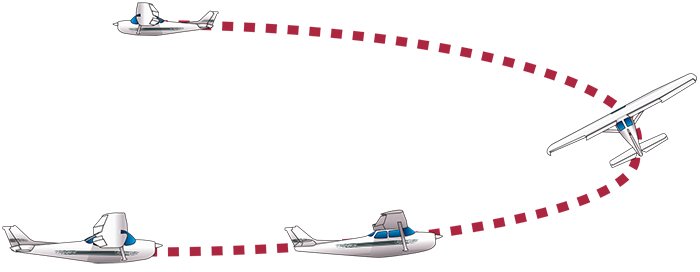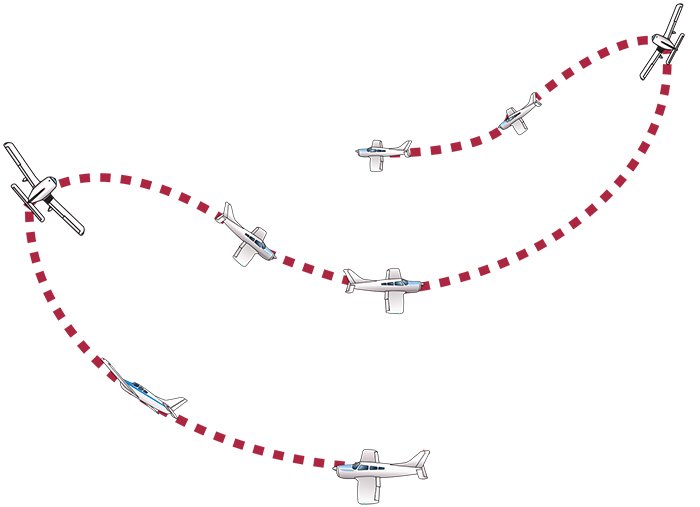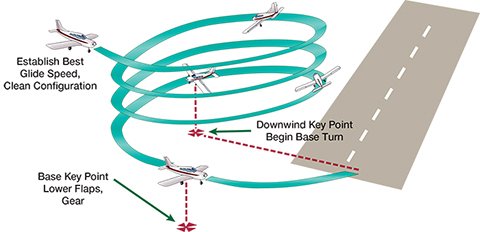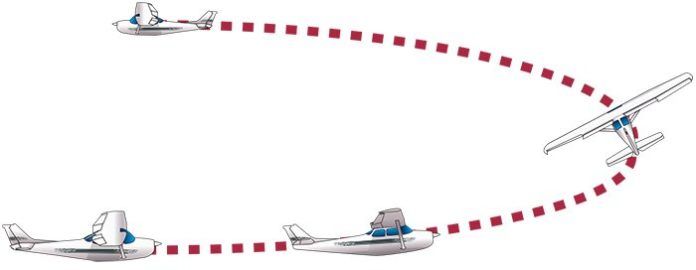Most pilots are content do drone along in the straight-and-level, rarely banking beyond 30 degrees or pitching up and down beyond 10. Meanwhile, aerobatic pilots enthuse in their ability to fly upside down, vertically and in all combinations. Somewhere in the middle of these two extremes are what the FAA calls performance maneuvers, generally thought of as those required on the commercial airplane pilots practical test.
Chandelles, steep turns and steep spirals all are part of that curriculum, and most pilots who go on to professional careers rarely, if ever, perform them again. Thanks to their lack of application in the kind of everyday flying most of us do, many pilots believe these maneuvers exist only to have something to do on the commercial checkride. Maybe. But as well see, they can have practical applications. The catch? You generally have to be in some kind of a predicament to need them.

What Theyre For
The FAAs Airplane Flying Handbook (AFH), FAA-H-8083-3B, pretty much ignores any of this controversy when describing performance maneuvers. Instead, it says they are used to develop a high degree of pilot skill. They aid the pilot in analyzing the forces acting on the airplane and in developing a fine control touch, coordination, timing and division of attention for precise maneuvering of the airplane. The AFH goes on to note, An important benefit of performance maneuvers is the sharpening of fundamental skills to the degree that the pilot can cope with unusual or unforeseen circumstances occasionally encountered in normal flight.

What kinds of unforeseen circumstances are we talking about here? Well, pretty much anything out of the ordinary that might be encountered by a pilot flying an airplane: weather, traffic, obstructions, mechanical difficulty…or the need to reverse course quickly, or descend steeply over the same spot. The point isnt that private pilots should be examined on their ability to perform a steep spiral. The point is even pilots who never aspire to fly for money can get into a jam; knowing from experience how the airplane handles at high power and angles of attack and low airspeed in a shallow bank might be useful in getting out of it.
In fact, I can think of specific predicaments several of these maneuvers can be used to get out of: It shouldnt require a rocket surgeon to figure out a steep spiral can come in handy when descending through a hole in an overcast, or that something approaching a Chandelle can help escape a box canyon. And despite their having specific names and way different descriptions, they all need to be flown the same way: By using all the airplanes primary controls simultaneously, and in a coordinated fashion.
Commonalities
In addition to being in the commercial practical test standards, these maneuvers all share some basic characteristics. These include:
Maximum Performance. They each are designed to eke out of an airplane its best rate of climb or descent in a confined space, or execute a rapid heading change. Because the bank angles are in the region where load factors rise, and because substantial control inputs may be required to initiate or perfect them, they should be entered at the manufacturers recommended speeds, or at VA, whichever is least.
Substantial Control Deflection. If youre doing these right, you may need inputs approaching the specific controls mechanical limit. This is especially true for rudder, at the Chandelles completion. Of course, if were going to perform these maneuvers correctly, were going to need to coordinate aileron and rudder, which can demand relative control inputs-opposite aileron to correct any overbanking tendency, for example-to which were not accustomed.
Changing Attitudes. In the Chandelle and Lazy 8 especially, control pressures are constantly changing when the maneuver is being flown correctly. Learning how these changes affect the airplanes aerodynamics and the controls effectiveness, and how to correct for those effects is one of the stated reasons for learning and practicing them.
Power Management. Many pilots dont normally think of the throttle as a primary flight control, but it is when considering these maneuvers. For example, it would be exciting to perform a steep spiral at cruise power, and fairly useless to try a Chandelle without it.

Beyond The Commercial PTS
While learning and perfecting these maneuvers will get you through the commercial checkride, they also will instill the skills and understanding necessary to control the airplane in extreme situations. Youll learn, for example, how much opposite aileron might be required to counter an airplanes overbanking tendency, or how much rudder is required with cruise power at minimum controllable airspeed, and how to recover from them without losing altitude.
Can this come in handy? Of course. The classic application of a steep spiral-for instance, maneuvering over a landing area for an emergency landing-is diagrammed above. Some of this is learned in primary training, but its perfected and practiced later. Likewise, learning what it takes to maintain heading at high power settings and angles of attack, as performed in a Chandelle, has applications in banner and glider towing, short-field operations and many others.
But the most critical and important applications of these skills and knowledge come when the chips are down.
A classic example might be in the traffic pattern, where an abrupt avoidance maneuver is necessary to avoid colliding with an airplane whose pilot prefers a straight-in approach to the pattern youre flying. An abrupt, full-power, climbing turn, starting from an already-slow speed and banked attitude, for example, can be just the thing to get out of his way. Meanwhile, weve already touched on the steep spiral as a tool for positioning the airplane for an emergency landing, or to descend through a hole in the clouds to VMC below. The same maneuver can be used to establish a get-down-now emergency descent: Pull the power to idle, roll into a 45-degree bank, drop the gear and flaps, adjust pitch to fly at the top of the white arc and youre spiraling down like an express train, under control and remaining over roughly the same location throughout.
Handle With Care
One thing these maneuvers may not teach adequately is how to manage control inputs when applying increased loading to the airplane. The central problem to avoid is the so-called rolling G, where a simultaneous application of roll and pitch combine to impose additional loads on the airframe. While a certificated airplane is supposed to withstand up to 3.8 G without breaking or bending, that value presumes its G loading is applied to one axis at a time, not more than one simultaneously.
Ever watched an aerobatic display, or video of a maneuvering fighter airplane? If the maneuver being performed will exert more than, say, 2 G, its pilot will apply aileron first or pitch first, never both at the same time. Rolling and pitching at the same time, for example, exerts a twisting moment on the airframe, imposing uneven loads on the wings or horizontal stabilizer. Instead, we want to uniformly and smoothly load up the airplane to the desired G level in one axis or another, then apply loading to the other axis. For example, roll into a steep bank, then apply nose-up pitch to counter the reduction in the vertical lift component. (Yes, an exception is the Lazy 8, but the G-loading applied in a well-executed example shouldnt approach 2 G, much less the airframes load limit.) All of these maneuvers, of course, are entered at appropriate airspeeds, to minimize G loading.
The Punchline
Whats the point? Just this: Recovering from unusual attitudes, or the need for abrupt maneuvering to avoid an obstacle or another airplane, can require a well-developed feel for the airplane, what its doing and how much further you can push it. One way to gain this kind of understanding is to learn and practice these and other performance maneuvers, regardless of whether you plan to add a commercial certificate to your wallet.




